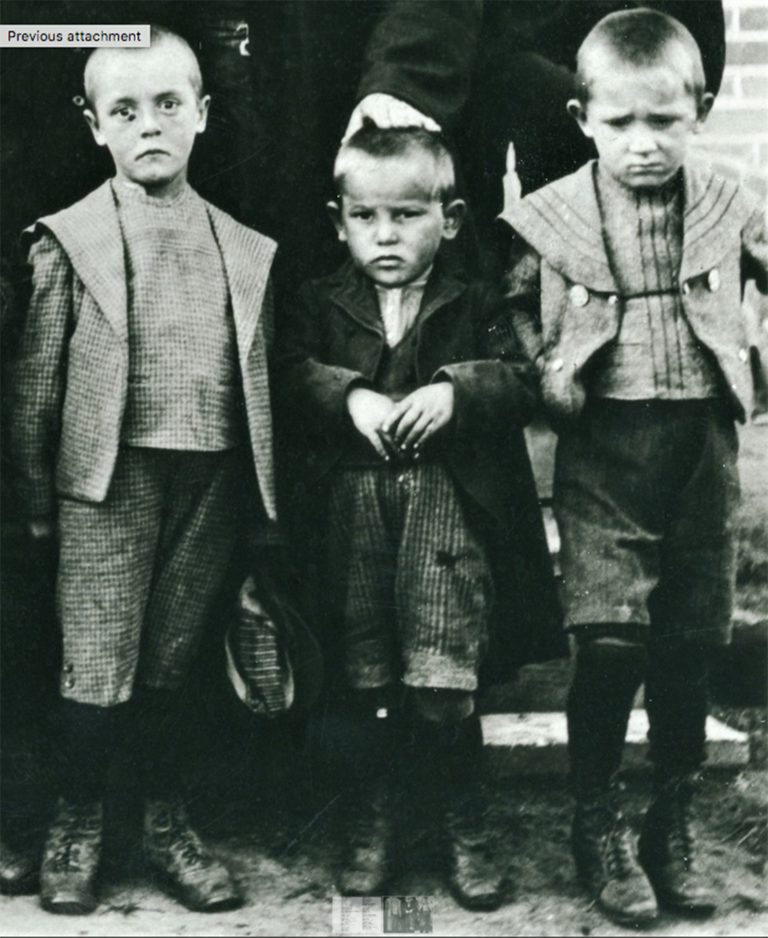
This is the first in a series of columns about the 70 British Home Children sent to St. Patrick’s Catholic Orphanage in Prince Albert between 1901 and 1907. While all orphanage records were destroyed in the terrible fire of 1947, every attempt has been made to trace the life stories of these dispossessed children through genealogy websites and newspaper databases
Introduction
Readers may recall that several years ago in my “PAssages” column for this newspaper I wrote about the 70 British Home Children, ages 3 to 14, who arrived at St. Patrick’s Catholic Orphanage in Prince Albert between 1901 and 1907. Over 100,000 impoverished children from England were shipped to Canada between 1869 and 1939 to work as farm hands or servants. Only about two percent were orphans; their parents were simply too poor to take care of them.
Since I wrote that column, I have been haunted by the fact that the stories of these children have all but disappeared, either in the records destroyed by the terrible orphanage fire of 1947 or simply lost in the sands of time. As with the subject of my previous column in the Herald, Nan Dorland, I believe they deserve to be remembered.
Imagine my excitement, then, when Jason Kerr, editor of the Herald, asked me if I would be interested in writing another history column for the paper. I immediately said “Yes!” and told him I was considering the British Home Children at the orphanage as my topic. That was months ago. Since then, I have been searching for records for each and every one of the 70 children. With the orphanage records gone up in smoke, there hasn’t been much to go on … except: the Internet.
What a treasure trove of information I have found online about most of these child migrants. Thanks to genealogy sites like Ancestry and FamilySearch I have not only found birth, marriage, and death records, but I have also connected with several of the British children’s descendants who have kindly shared their memories and photos with me. Newspaper indexes like newspapers.com and britishnewspaperarchive.co.uk have revealed obituaries and stories about many of these young people and their families.
Library and Archives Canada has several invaluable databases including ship’s passenger lists, personnel records of the First World War (several of the boys at the orphanage signed up), and Canada census data up to 1926. The national archives even has a database called Home Children Records.
And I cannot say enough about the amazing researchers on the Facebook group, Home Children Canada, (formerly British Home Children Advocacy & Research Association). Whenever a descendant or a researcher like me posts a question about a child emigrant, an army of helpful genealogists jumps to the task of finding out as much as they can about the person and their family. I am truly impressed by, and grateful for, their dedicated efforts “to bring the true stories of the British Home Children to light, maintain their memory, and to reunite the families separated by the child migrant schemes.” Check out their website to learn more: www.britishhomechildren.com.
Not all my research has been online, however. Of course, there are books. And, as always, the staff and volunteers at the Bill Smiley Archives, Prince Albert Historical Museum, have been incredibly helpful, opening their files to try and find information about the orphanage and its “inmates.” The Provincial Archives of Saskatchewan, the Roman Catholic Diocese of Saskatoon, and Janice Trudel, Diocesan Archivist for the Roman Catholic Diocese of Prince Albert, have also provided me with much useful information in my quest to discover the stories of these British Home Children.
Okay! Enough about research and sources! In the coming months, each bi-weekly column will feature a story about one of the 70 children who came to live at St. Patrick’s Catholic Orphanage in the early 1900s. (Several arrived with siblings, so their stories will be combined.) My main goals in telling these stories are 1) to give readers a sense of the conditions in the United Kingdom that led to these children being sent to Canada; and 2) to reveal how their lives unfolded after they arrived.
Ultimately, I hope readers will learn about – or learn more about – British Home Children and the whole child migration scheme. I cannot wait to start introducing you to each of the destitute children who arrived at the Prince Albert orphanage over 120 years ago.
